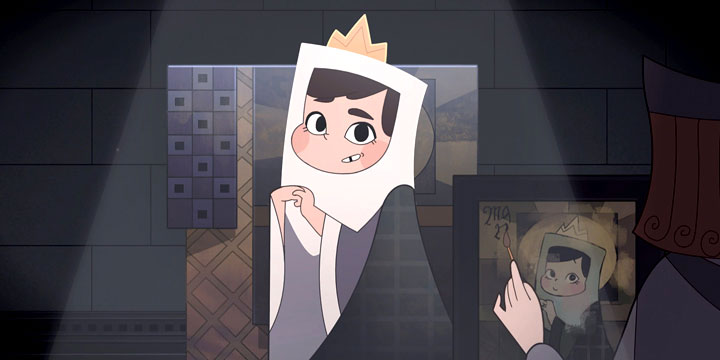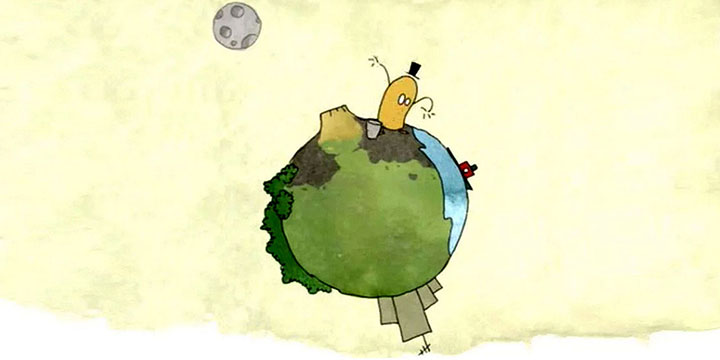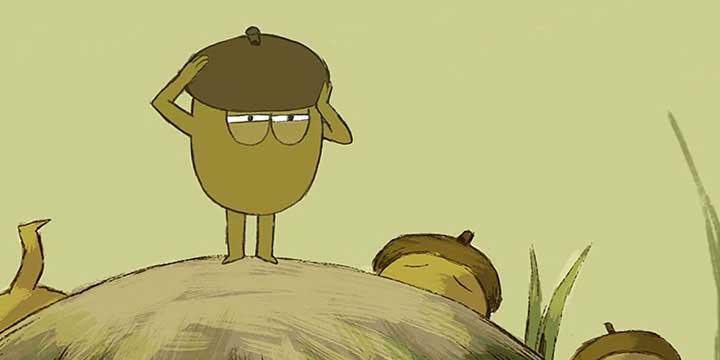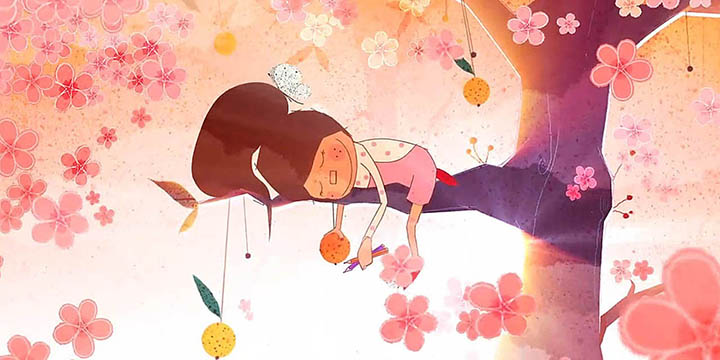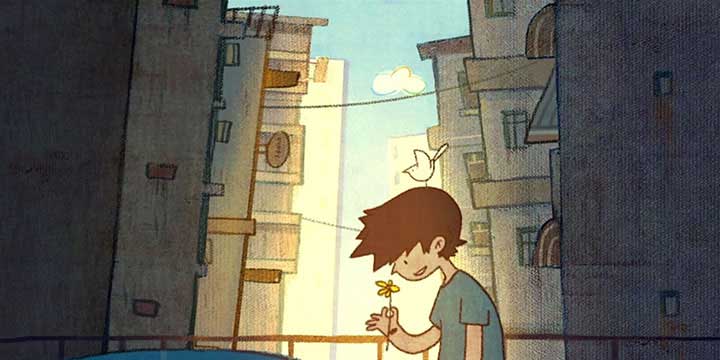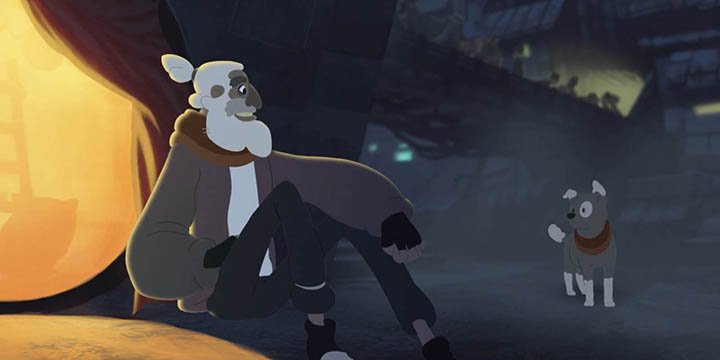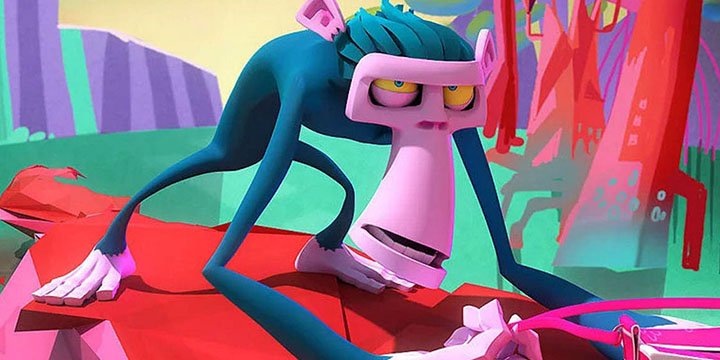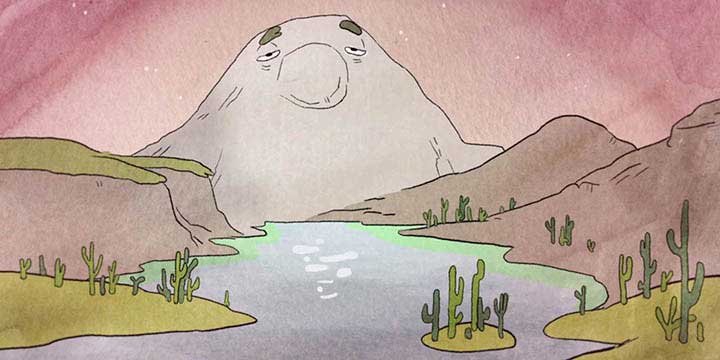Film commentary: Dark dark woods
The film tells a simple story experienced by all children: how to invent an imaginary world to escape from the daily life framed by the rules imposed by parents (and the whole society behind them). The medieval setting adds a historical touch that scratches the idyllic image of the princess in the first part of the film.The film exploits the (somewhat facile) opposition between nature and culture. The world dreamed of by the little princess is indeed that of the threatening forest, populated by creatures that are frightening at first sight, whose plant kingdom takes over everything, from the walls of the castle to the objects of the culture to which she is to be conformed. The graphics support this opposition between the geometric rigidity of the castle and the invasive fluidity of the beasts and plants of the forest.
The story is thus one of the princess's discovery of the value of transgression. But the experience is at best a small sting, with the character returning to the family circle to share her discovery for a while. In the process, we will have mischievously navigated a world of clichéd images and glimpsed the possibility of their reverse.
Questioning the film: Dark dark woods
Understanding the story, the theme, expressing one's sensibility and exercising one's critical mind.The interest of Dark Dark Woods lies less in the story than in the reflections it allows us to sketch out about the iconic value of images (images taken as a summary of cultural representations).
One could start discussing the notion of stereotype and identify all the stereotypes used in the film in relation to "princess stories".
Then it would be interesting to reflect on the effects of the images, as described in the part of the film where the girl is taught to look like the portraits in the picture gallery. This discussion could be extended by looking at the history of the place of women in society and in particular the differences between the image of women conveyed by courtly literature (which largely persists in contemporary representations) and the social realities of the classical Middle Ages.
Another area of discussion concerns the image of the forest. How does it contrast with the usual life of the little princess and why? Is the forest still the place of the unknown today? The place of the forest, as a place of the wild and a place of life, also deserves a historical perspective.
1 Why does the little girl agree to do all the activities imposed on her?
A child is supposed to do what the adults ask her to do... A princess has duties with regard to her rank, she has to behave in a certain way, which she has to learn...
2 Why is she afraid of the creatures of the forest?
They are monsters: unknown creatures who live outside of humans.They come from the forest, which is itself a dangerous place.
3 Why can we say that the world of the forest is the opposite of that of the castle?
The forest is organic, wild, disorderly, free, while the castle is mineral, compartmentalized, regulated, constrained...
4 What are all the elements that show that we are in a "princess story"?
The castle, the medieval costumes, the paintings, the servants, the conventional activities (maintenance, embroidery, music, literature)...
5 What else does the film show about the princesses?
Their life was difficult, there were many rules to learn.They were not necessarily happy with their forced situation.They were like prisoners...
6 In the castle, what are the portraits for?Do they have an influence on the princess's life?
They are the princess's ancestors.They are the image of what she must become, the models she must reproduce.
7 Why does the princess have so much fun with the creatures of the forest?
They allow her to experience what she cannot normally do.They are not subject to the rules of castle life, they break those rules. They take her out of the castle.They allow her to play with her body freely.
8 Whatdid the princess learn?
That there is more to life than the rules of princess life, that her parents can also want to have fun, that the way you have to behave in society is like a garment that hides who you really are....
References
On the history of women: Histoire des femmes en Occident - tome 2 Le Moyen Age, Georges Duby and Michelle Perrot, Christiane Klapisch-Zuber (dir.) (Plon, 1990).
On the history of man's relationship with the forest: Une histoire de la forêt, by Martine Chalvet (Seuil, 2011).
Download the PDF of the film's educational activities
Created with the support of the Ministry of Education and the CNC.Viewing of the film with the family, educational activities with parents at home and with teachers in class.
Sylvestres (Plastic arts) (Cycle 2 and 3)
Educational activities proposed by Bruno Pellier based on the film Dark dark woods.
Princess puzzle (French) (Cycle 2 and 3)
Educational activities proposed by Bruno Pellier based on the film Dark dark woods.
Discover other educational sheets created with the support of the French Ministry of Education and the CNC...
Theme
PrincessGenre and keywords
Fantasy, parental relationship, king, queen, castle, dream, forest, animalsRecommended age
5 yearsParental control.
Duration
7 min 44 s.Title
Dark dark woods.Directed by
Emile GignouxMusic
K. H. Lampl & K.LampK. H. Lampl & K. Lamp
Production
School The Animation Workshop in 2017, Denmark.Discover cartoons for children on the theme of ecology, free animated films on the living world...
Our selection of children's films is recommended by teachers and parents to allow small children to watch quality films safely.
School teachers' opinions, parental control is important for children. Give your opinion on films, help us find the best films for children!
Are you a teacher, a kindergarten teacher? Are you looking for a cartoon for children, a short film programme for the little ones?


